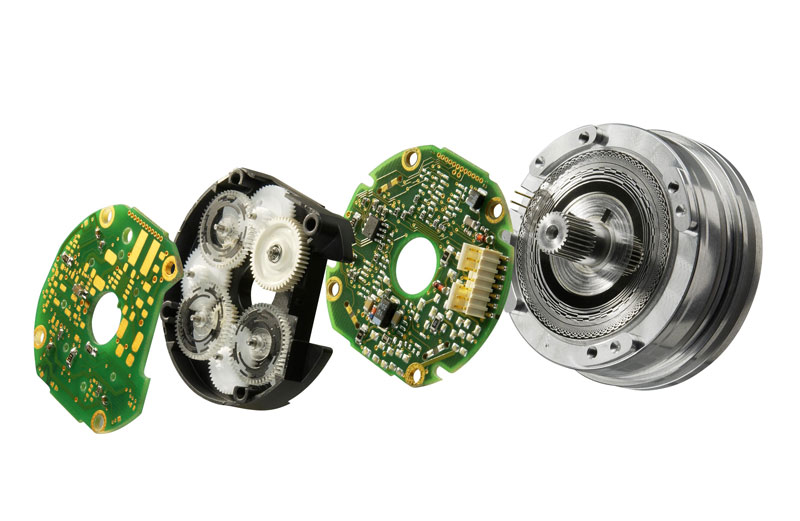

Rotary encoders are sensors which convert a movement into an electrical signal.
Two variants are available: Rotary shaft encoders respond to rotary movements, while linear encoders are used to monitor longitudinal movements. If rotary encoders are coupled with mechanical power transmission devices, such as rack and pinion drives, measuring wheels or spindles, then linear movements, rotation speed and positions can also be recorded with these encoders. Rotary encoders are available with multiple outputs. Incremental rotary encoders generate a series of pulses as a result of a single movement. These pulses can be used to measure the rotation speed or be transmitted to a counter for position monitoring. Absolute rotary encoders generate digital multibit data which allow the current position to be identified immediately. Rotary encoders are used in a variety of applications. They are used with feedback converters for feedback for motor speed control systems, as sensors in cutting and positioning devices, and as inputs for rotation speed and vehicle speed control systems.
A few examples:
| Devices for door controls | component assembly machines |
| robots | labelling machines |
| lens grinding machines | x and y-axis graph displays |
| plotters | analysis systems |
| test machines | drilling machines |
| ultrasound welding | mixing machines |
| deformation machines | and technical medical equipment |